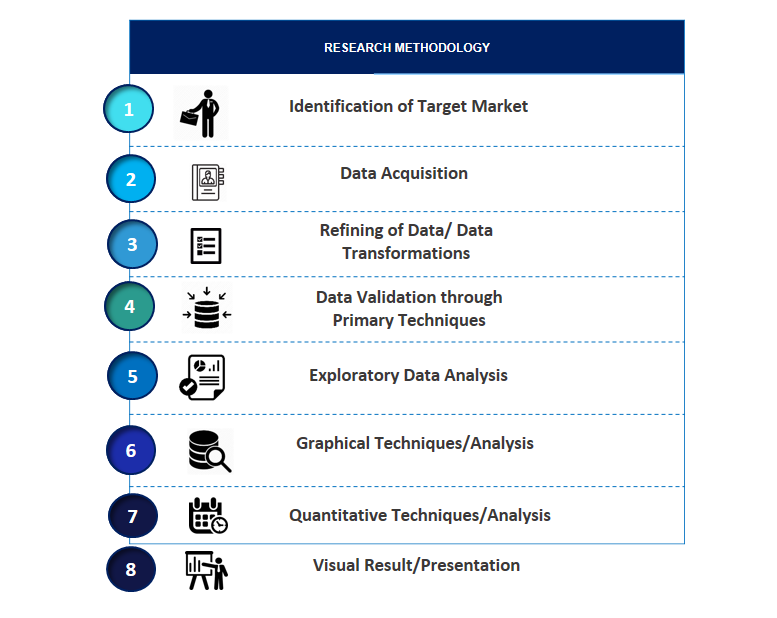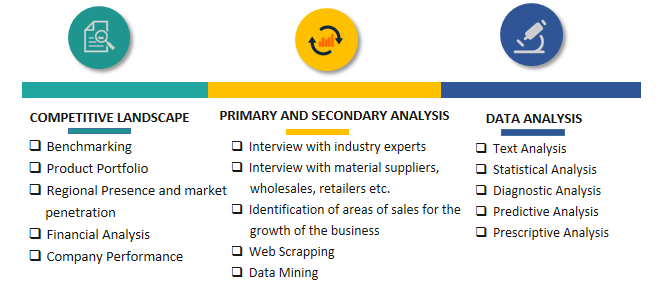Global Gynecology Drugs market Overview:
According to SPER Market Research, the Gynecology Drugs Market is estimated to reach USD 58.62 billion by 2030 with a CAGR of 4.9%.
Gynecology is the branch of medicine that deals with the health of the female reproductive system as well as the diagnosis and treatment of female reproductive organ diseases. Gynecologists are physicians specialized in treating these diseases and providing well-woman health care focused on the reproductive organs. A major shift in the lifestyles of women led to a rise in the prevalence of gynecological disorders affecting the functioning of the uterus, ovaries, and appendages. As a result, a steep rise in advancements in the treatment of these diseases was observed in recent years to address their unmet healthcare needs creating opportunities for drug manufacturers fueling the gynecological therapeutics market. The growing female elderly population is predicted to boost demand for gynecology drugs since they are more susceptible to and at higher risk of being affected by gynecological problems.

The high-end investments by the public and private players in research and development activities to improve the effectiveness of drugs and eliminate the side effects are expected to create lucrative growth opportunities for the global gynecology drugs market in the forecast period.
Impact of COVID-19 on the Global Gynecology Drugs Market
Most industries across the world have been negatively impacted over the last few months. The same can be said for the global Gynecology Drugs market. Furthermore, consumer demand has subsequently decreased as people are now more focused on decreasing non-essential expenses from their separate budgets as the general economic condition of most people has been badly impacted by this outbreak. These factors are projected to weigh on the revenue trajectory of the global Gynecology Drugs market throughout the forecast period. However, as individual governmental bodies begin to relax these imposed restrictions, the global Gynecology Drugs market is likely to rebound.
Scope of the Report:
| Report Metric | Details |
| Market size available for years | 2019-2030 |
| Base year considered | 2021 |
| Forecast period | 2022-2030 |
| Segments covered | By Therapeutics, By Indication, By Distribution Channel
|
| Geographies covered | North America, Europe, Asia Pacific, Latin America, Middle East, Africa
|
| Companies Covered | Abbott Laboratories Ltd., AbbVie Inc., Allergan Plc., Amgen Inc., AstraZeneca Plc, Bayer AG, Bristol-Myers Squibb Company, Eli Lilly and Company Ltd., F. Hoffmann-La Roche Ltd., GlaxoSmithKline Plc, Johnson and Johnson Inc., Lupin Pharmaceuticals, Inc., Merck & Co., Inc., Novartis Ltd., Pfizer Inc. Sanofi SA, Teva Pharmaceutical Industries Ltd.
|
Global Gynecology Drugs Market, By Therapeutics:
Based on Therapeutics, Global Gynecology Drugs Market is segmented as; Hormonal Therapy and Non-Hormonal Therapy.
Global Gynecology Drugs Market, By Indication:
Based on the Indication, Global Gynecology Drugs Market is segmented as; Gynecology Cancers, Menopausal Disorder, Polycystic Ovary Syndrome, Contraception, and others.
Global Gynecology Drugs Market, By Distribution Channel:
Based on the Distribution Channel, Global Gynecology Drugs Market is segmented as; Hospital Pharmacies, Retail Pharmacies, and Online Pharmacies.
Global Gynecology Drugs Market, By Region:
The Asia Pacific emerged as the leading region in the Global Gynecology Drugs Market with the maximum market share in 2021.
1. Introduction
1.1. Scope of the report
1.2. Market segment analysis
2. Research Methodology
2.1 Research data source
2.1.1 Secondary data
2.1.2 Primary data
2.1.3 SPER’s internal database
2.1.4 Premium insight from KOL’s
2.2 Market size estimation
2.2.1 Top-down and Bottom-up approach
2.3 Data Triangulation
3. Executive Summary
4. Market Dynamics
4.1. Driver, Restraint, Opportunity, and Challenges Analysis
4.1.1 Drivers
4.1.2 Restraints
4.1.3 Opportunities
4.1.4 Challenges
4.2. COVID-19 Impacts on the Global Gynecology Drugs Market
5. Market variables and outlook
5.1. SWOT analysis
5.1.1 Strengths
5.1.2 Weaknesses
5.1.3 Opportunities
5.1.4 Threats
5.2. PESTEL analysis
5.2.1 Political landscape
5.2.2 Economic landscape
5.2.3 Social landscape
5.2.4 Technological landscape
5.2.5 Environmental landscape
5.2.6 Legal landscape
5.3. PORTER’S five forces analysis
5.3.1 Bargaining power of suppliers
5.3.2 Bargaining power of Buyers
5.3.3 Threat of Substitute
5.3.4 Threat of new entrant
5.3.5 Competitive rivalry
5.4. Heat map analysis
6. Global Gynecology Drugs Market, By Therapeutics, 2019-2030 (USD Million)
6.1. Hormonal Therapy
6.2. Non-Hormonal Therapy
7. Global Gynecology Drugs Market, By Indication, 2019-2030(USD Million)
7.1. Gynecology Cancers
7.2. Menopausal Disorder
7.3. Polycystic Ovary Syndrome
7.4. Contraception
7.5. Others
8. Global Gynecology Drugs Market, By Distribution Channel, 2019-2030 (USD Million)
8.1. Hospital Pharmacies
8.2. Retail Pharmacies
8.3. Online Pharmacies
9. Global Gynecology Drugs Market, By Region, 2019-2030 (USD Million)
9.1. North America
9.1.1. United States
9.1.2. Canada
9.1.3.Mexico
9.2. Europe
9.2.1. Germany
9.2.2. United Kingdom
9.2.3. France
9.2.4. Italy
9.2.5. Spain
9.2.6. Rest of Europe
9.3. Asia-Pacific
9.3.1. China
9.3.2. Japan
9.3.3. India
9.3.4. Australia
9.3.5. South Korea
9.3.6. Rest of Asia-Pacific
9.4. South America
9.4.1. Brazil
9.4.2. Argentina
9.4.3. Rest of South America
9.5. Middle East & Africa
9.5.1. Kingdom of Saudi Arabia
9.5.2. United Arab Emirates
9.5.3. Rest of Middle East & Africa
10. Company Profiles
10.1 Abbott Laboratories Ltd.
10.1.1. Company details
10.1.2. Financial outlook
10.1.3. Product summary
10.1.4. Recent developments
10.2 AbbVie Inc.
10.2.1. Company details
10.2.2. Financial outlook
10.2.3. Product summary
10.2.4. Recent developments
10.3 Allergan Plc.
10.3.1. Company details
10.3.2. Financial outlook
10.3.3. Product summary
10.3.4. Recent developments
10.4 Amgen Inc.
10.4.1. Company details
10.4.2. Financial outlook
10.4.3. Product summary
10.4.4. Recent developments
10.5 AstraZeneca Plc
10.5.1. Company details
10.5.2. Financial outlook
10.5.3. Product summary
10.5.4. Recent developments
10.6 Bayer AG
10.6.1. Company details
10.6.2. Financial outlook
10.6.3. Product summary
10.6.4. Recent developments
10.7 Bristol-Myers Squibb Company
10.7.1. Company details
10.7.2. Financial outlook
10.7.3. Product summary
10.7.4. Recent developments
10.8 Eli Lilly and Company Ltd.
10.8.1. Company details
10.8.2. Financial outlook
10.8.3. Product summary
10.8.4. Recent developments
10.9 F. Hoffmann-La Roche Ltd.
10.9.1. Company details
10.9.2. Financial outlook
10.9.3. Product summary
10.9.4. Recent developments
10.10 GlaxoSmithKline Plc
10.10.1. Company details
10.10.2. Financial outlook
10.10.3. Product summary
10.10.4. Recent developments
10.11 Johnson and Johnson Inc.
10.11.1. Company details
10.11.2. Financial outlook
10.11.3. Product summary
10.11.4. Recent developments
10.12 Lupin Pharmaceuticals, Inc.
10.12.1. Company details
10.12.2. Financial outlook
10.12.3. Product summary
10.12.4. Recent developments
10.13 Merck & Co., Inc.
10.13.1. Company details
10.13.2. Financial outlook
10.13.3. Product summary
10.13.4. Recent developments
10.14 Novartis Ltd.
10.14.1. Company details
10.14.2. Financial outlook
10.14.3. Product summary
10.14.4. Recent developments
10.15 Pfizer Inc.
10.15.1. Company details
10.15.2. Financial outlook
10.15.3. Product summary
10.15.4. Recent developments
10.16 Sanofi SA
10.16.1. Company details
10.16.2. Financial outlook
10.16.3. Product summary
10.16.4. Recent developments
10.17 Teva Pharmaceutical Industries Ltd
10.17.1. Company details
10.17.2. Financial outlook
10.17.3. Product summary
10.17.4. Recent developments
SPER Market Research’s methodology uses great emphasis on primary research to ensure that the market intelligence insights are up to date, reliable and accurate. Primary interviews are done with players involved in each phase of a supply chain to analyze the market forecasting. The secondary research method is used to help you fully understand how the future markets and the spending patterns look likes.
The report is based on in-depth qualitative and quantitative analysis of the Product Market. The quantitative analysis involves the application of various projection and sampling techniques. The qualitative analysis involves primary interviews, surveys, and vendor briefings. The data gathered as a result of these processes are validated through experts opinion. Our research methodology entails an ideal mixture of primary and secondary initiatives.


